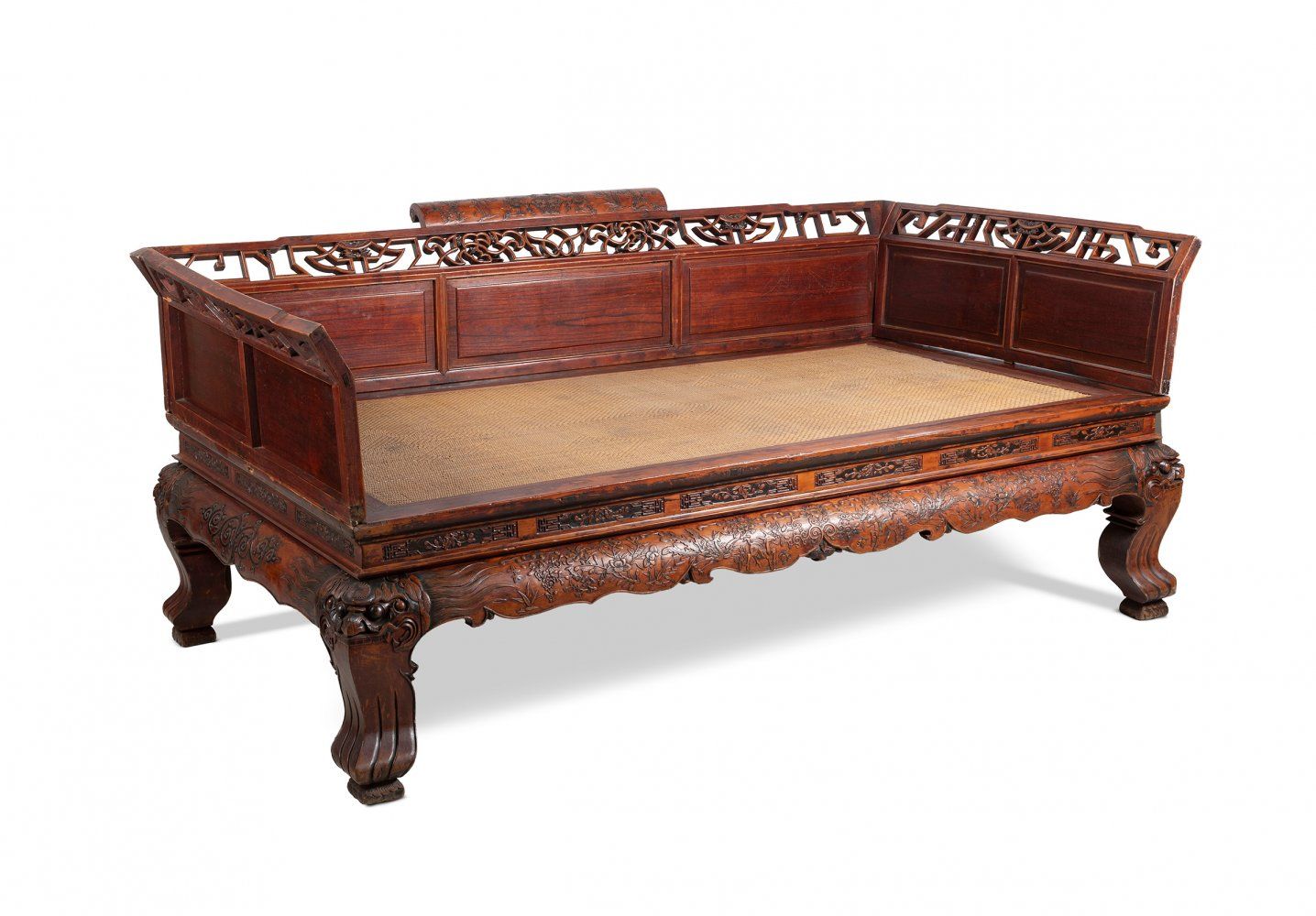Description
Opium smoking bed. China, Qing dynasty, 19th century. Carved Huanghuali (rosewood) and rattan. It shows signs of use. With slight flaws in the wood and in the polychromy. Measurements: 98 x 210 x 120 cm. Rare Qing dynasty opium smoking bed, dated to the 19th century. It is made of Huanghuali (rosewood) wood carved with opium flowers, goats, birds and dragons on the lower skirt and legs. The back and sides are closed and the entrance is open. The upper part is made of rattan as a mattress. An opium bed is a piece of furniture originally found in opium dens. Customers would recline on the bed while smoking opium. The bed is usually a low wooden platform topped with a thin cushion. Some have canopies or closed sides. In the 19th century opium dens were common especially in China, Southeast Asia and the Chinatowns of North America and France. In the West opium dens were frequented by and associated with the Chinese, as they were usually run by Chinese who supplied the opium and prepared it for non-Chinese smokers. Most of these places maintained a supply of opium paraphernalia, such as the specialised pipes and lamps that were necessary to smoke the drug. Customers reclined on beds to hold the long opium pipes over the oil lamps, which heated the drug until it vaporised, allowing the smoker to inhale the vapours. Opium dens in China were frequented by all levels of society.
3
Opium smoking bed. China, Qing dynasty, 19th century. Carved Huanghuali (rosewood) and rattan. It shows signs of use. With slight flaws in the wood and in the polychromy. Measurements: 98 x 210 x 120 cm. Rare Qing dynasty opium smoking bed, dated to the 19th century. It is made of Huanghuali (rosewood) wood carved with opium flowers, goats, birds and dragons on the lower skirt and legs. The back and sides are closed and the entrance is open. The upper part is made of rattan as a mattress. An opium bed is a piece of furniture originally found in opium dens. Customers would recline on the bed while smoking opium. The bed is usually a low wooden platform topped with a thin cushion. Some have canopies or closed sides. In the 19th century opium dens were common especially in China, Southeast Asia and the Chinatowns of North America and France. In the West opium dens were frequented by and associated with the Chinese, as they were usually run by Chinese who supplied the opium and prepared it for non-Chinese smokers. Most of these places maintained a supply of opium paraphernalia, such as the specialised pipes and lamps that were necessary to smoke the drug. Customers reclined on beds to hold the long opium pipes over the oil lamps, which heated the drug until it vaporised, allowing the smoker to inhale the vapours. Opium dens in China were frequented by all levels of society.
